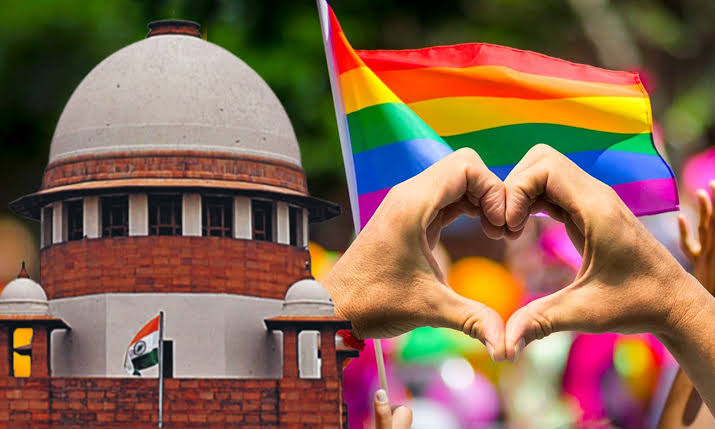Author: Aditya Kannoujiya, Integrated Law Course, Delhi University
State of Punjab v. Davindar Singh: A Critical Analysis
In the case of State of Punjab v. Davindar Singh, the Supreme Court faced the crucial issue of sub-classification within the Scheduled Castes (SC) for the purpose of reservations. The court’s judgment delved into whether the state can provide preferential treatment to certain castes within the Scheduled Castes list, effectively dividing them into smaller groups for better representation.
Introduction
The judgment delivered by a Constitution Bench of the Supreme Court of India addressed a pivotal constitutional issue concerning the sub-classification of Scheduled Castes (SCs) for the purpose of reservations in education and public employment. The central question was whether such sub-classification is constitutionally permissible under Articles 14, 15, and 16 of the Indian Constitution, which guarantee equality before the law, prohibition of discrimination on various grounds, and equality of opportunity in public employment, respectively. This matter came to the forefront after the Punjab and Haryana High Court struck down key provisions of the Punjab Scheduled Castes and Backward Classes (Reservation in Services) Act, 2006, as well as a similar notification issued in Haryana. These provisions and notifications had sought to allocate a specific percentage of reservations to different sub-groups within the Scheduled Castes.
The State Governments of Punjab and Haryana argued that certain SC sub-groups, particularly those that were socio-economically more disadvantaged, had not benefited equally from the general reservation provided to the SC category. In response, they introduced sub-classifications within the SC category to ensure equitable distribution of the benefits of reservation. However, the High Court’s decision declared such sub-classification as unconstitutional, leading to appeals before the Supreme Court.
The judgment has significant implications for India’s affirmative action policies, as it touches on the delicate balance between the constitutional mandate of ensuring equality for all citizens and the need to address the unequal access to opportunities among various sub-castes within the SC community. This case thus called upon the Supreme Court to interpret the scope of reservation policies and the extent to which the state can create further classifications within constitutionally recognized categories like the Scheduled Castes.
Legal Provisions in Question
At the core of this judgment lies Article 14 (equality before the law) and Article 16 (equality of opportunity in matters of public employment). The appellants argued that dividing Scheduled Castes into smaller groups for reservation violated the homogeneity principle established under Article 341, which defines the Presidential List of Scheduled Castes. They contended that once a caste is included in this list, it forms a single, indivisible class, and any further division amounts to an unconstitutional alteration of the Presidential List.
On the other hand, the State of Punjab defended the sub-classification, arguing that substantive equality requires providing benefits to the most disadvantaged sections within the Scheduled Castes. They contended that certain castes, despite being on the SC list, continue to face greater social and educational backwardness and need additional protection through reservation.
Historical Precedent and Conflict
This judgment cannot be fully understood without considering past judicial pronouncements, particularly the 2005 judgment in EV Chinnaiah v. State of Andhra Pradesh. In that case, the Supreme Court had declared that sub-classification of Scheduled Castes was impermissible, as the entire list constituted a homogenous group. However, in State of Punjab v. Davindar Singh, the court was called upon to revisit this stance, particularly in light of the larger policy goals of reservation under Article 16(4).
In Indra Sawhney v. Union of India (1992), the court had held that backward classes could be further sub-divided into ‘more backward’ and ‘backward’ classes, justifying this based on their levels of representation. The question now was whether this rationale could extend to the Scheduled Castes as well.
Impact on Reservation Policy
The court in Davindar Singh eventually concluded that sub-classification was, in fact, permissible. It ruled that preferential treatment to certain sub-groups within the Scheduled Castes did not violate the constitutional mandate, as long as such sub-classification was aimed at uplifting the most marginalized within the SC category. The court reasoned that the Scheduled Castes, as a category, were not a homogenous group. Different sections within this group experienced varying levels of discrimination, which justified providing targeted reservations to ensure equitable distribution of benefits.
The court’s decision reflected a shift towards recognizing that reservation, as an instrument of substantive equality, must be sensitive to the internal disparities within marginalized communities. By allowing sub-classification, the court emphasized the importance of addressing the social and economic backwardness within the SC category in a nuanced manner.
Conclusion
State of Punjab v. Davindar Singh marks a significant development in the interpretation of reservation policy in India. The court’s decision underscored the principle that equality is not just about providing uniform treatment but also about recognizing the diverse challenges faced by different sections within the Scheduled Castes. Through this judgment, the Supreme Court affirmed the state’s power to make provisions for more focused affirmative action, ensuring that those who are most disadvantaged within an already marginalized group receive adequate opportunities for upliftment.
FAQS
1. What was the core issue in State of Punjab v. Davindar Singh?
The key issue was whether sub-classification within the Scheduled Castes (SC) for reservation purposes is constitutionally valid. Specifically, the case examined if certain sub-groups within the SC category, like Balmikis and Mazhabi Sikhs, could receive preferential treatment in reserved seats, ensuring more equitable distribution of benefits.
2. Which constitutional provisions were central to this case?
The case involved:
Article 14 (Right to Equality)
Article 15(4) (Special provisions for backward classes)
Article 16(4) (Reservation in public employment)
Article 341 (Presidential notification of Scheduled Castes)
The main concern was whether sub-classification within the SCs violated these provisions, particularly the homogeneity principle under Article 341.
3. Why was Chinnaiah significant in this context?
In EV Chinnaiah v. State of Andhra Pradesh (2005), the Supreme Court held that sub-classification of SCs was unconstitutional, as SCs formed a homogenous class under Article 341. The court in Davindar Singh was asked to reconsider this position in light of disparities within the SC category.
4. What was the court’s final decision in Davindar Singh?
The court ruled that sub-classification within SCs is permissible. It recognized that different sections of SCs experience varying levels of backwardness, justifying preferential treatment for the most marginalized. This decision marked a shift towards substantive equality.
5. How does this judgment affect reservation policy?
The judgment allows states to create sub-categories within the SC list to ensure more equitable access to reservations, promoting fairness in affirmative action policies.




